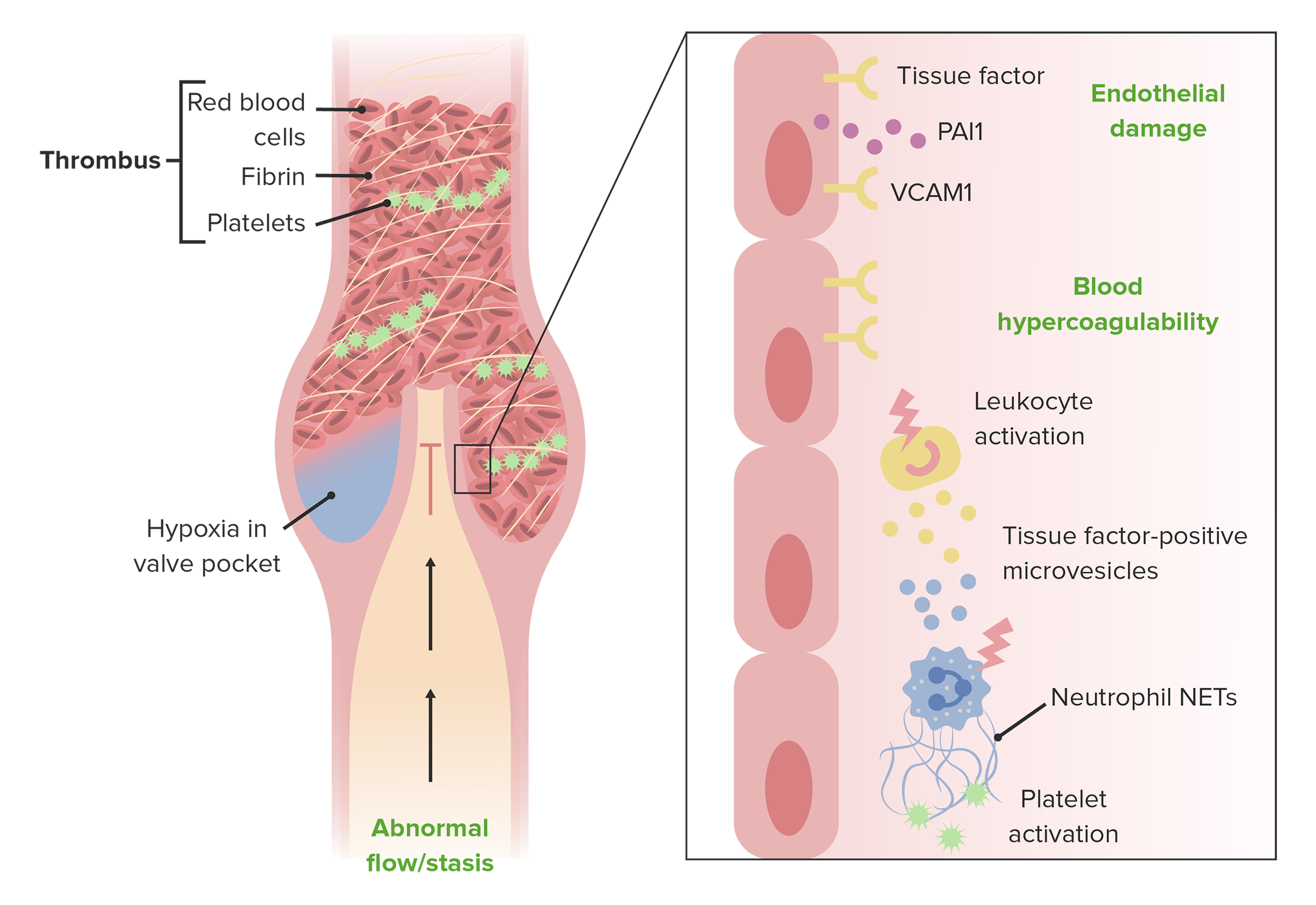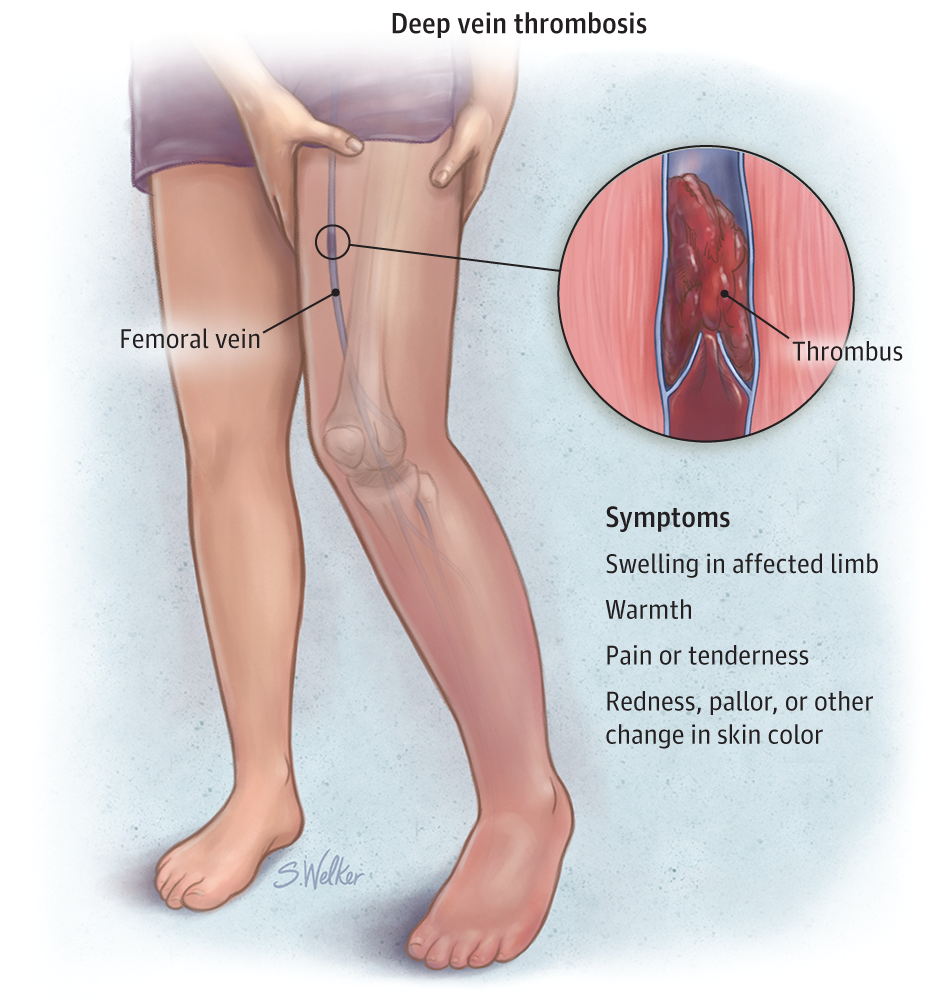This is often the main imaging test for diagnosing DVT. Presenting signs and symptoms.

Deep Vein Thrombosis Concise Medical Knowledge
It uses sound waves to make pictures of the.

. Rapid breathing or shortness of breath. Venous thromboembolism VTE is a term used to describe both deep vein thrombosis DVT and pulmonary embolism PE disorders caused by thrombus formation. Deep vein thrombosis is a condition where blood clots form in the deep veins usually the extremities.
Deep vein thrombosis DVT is a medical condition that occurs when a blood clot forms in a deep vein. D-dimer also called fibrin degradation fragment This is a blood test that assesses for fibrin degradation fragment d-dimer its a fibrin degradation product. This activity reviews the ultrasonographic evaluation of deep venous thrombosis and highlights the role of the interprofessional team in managing patients with this condition.
The procedure for a leg assessment for a suspected deep vein thrombosis is within the skillset of nurses. There is variability and disagreement among authoritative groups regarding the necessary components of the test. Nursing Interventions for DVT Deep Vein Thrombosis Can be diagnosed with an ultrasound.
Assessment and Urgent Referral Page 3 of 12 After MI. Assessment of a patient with deep vein thrombosis include. For other tests you may need to go a hospital or radiology clinic.
Venous ultrasound is the standard imaging test for patients suspected of having acute deep venous thrombosis DVT. The computed tomography venogram shows bilateral deep venous thrombosis arrows. Ineffective Peripheral Tissue Perfusion.
This forms a pulmonary embolism PE. Here are five 5 nursing care plans NCP and nursing diagnosis for patients with deep vein thrombosis DVT. Epub ahead of print.
Deep vein thrombosis DVT occurs when a blood clot thrombus forms in one or more of the deep veins in your body usually in your legs. To diagnose deep vein thrombosis a doctor will first do a. It is important to know about DVT because it can happen to anybody and can cause serious illness disability and in some cases death.
Visit The Official Patient Site For Additional Information About DVTPE Blood Clots. The nurse is assessing a patient who has many risk factors for the development of a DVT for signs and symptoms of a deep vein thrombosis. Deep vein thrombosis can cause leg pain or swelling but also can occur with no symptoms.
The incidence of VTE is estimated to be 1 per 1000 people annually 1 2 with DVT accounting for approximately two-thirds of these events 3. Involves the injection of a radio-contrast medium into the venous system of the lower extemities. Doppler ultrasonography compression ultrasonography or contrast venography are used to diagnose deep vein thrombosis DVT Unfractionated heparin UH and low-molecular weight heparin LMWH.
In the lungs the clot can cut off the flow of blood. If you have a blood clot and it breaks free it. DVT deep vein thrombosis is one of the most critical circulatory system-related cardiovascular disorders affecting a large populace worldwide.
Use of the Wells score to assess pretest probability is. Deep vein thrombosis DVT a subset of venous thromboembolism VTE is a major preventable cause of morbidity and mortality worldwide. Youll also have a physical exam so that your doctor can check for areas of swelling tenderness or changes in skin color.
Non invasic and provide evidence of a venous obstruction by a thrombus. A deep vein thrombosis DVT is a blood clot in a large vein deep inside a leg arm or other part of the body. The prevalence of DVT has worsened to becoming one of the leading cardiovascular disorders according to World Health Organization.
Pulmonary embolism PE a dreaded complication of DVT. Pain in your shoulder arm back or jaw. Tests used to diagnose or rule out a blood clo.
A proper clinical assessment includes a careful evaluation of the patients signs symptoms and risk factors for venous thrombosis. A d-dimer test is a diagnostic test used to evaluate DVTs. Eur Heart J 2017Feb 17.
A DVT Is A Blood Clot Which Can Travel To The Lungs And Lead To A PE. Used to diagnose blood clots or Disseminated Intravascular Coagulation DIC. It is very difficult.
Other risk factors and variables must be considered during a deep vein thrombosis assessment. Ad Get Info On An Rx Option To Treat Lower The Risk Of Recurrent DVTPE Blood Clots. All patients being admitted to the hospital or undergoing surgery should be assessed for VTE risk on admission and re-assessed within 24 hours or if a change occurs in the clinical situation.
A blood clot in your legs can also happen. Cancer is one of the risk factors for deep vein thrombosis DVT. These clots usually develop in the lower leg thigh or pelvis but they can also occur in the arm.
You can get DVT if you have certain medical conditions that affect how your blood clots. Concomitant progestin use increases the risk over estrogen alone. To diagnose DVT your doctor will ask you about your symptoms.
What signs and symptoms below would possibly indicate a deep vein thrombosis is present. The clot can separate from the vein and travel to the lungs. Nursing management for deep vein thrombosis entails the following.
However ultrasound is the most accurate non-invasive test to diagnose deep venous thrombosis. Clinical signs and symptoms of acute DVT are highly variable and nonspecific. The two-level Wells score is a systematic standardised approach to deep vein thrombosis assessment.
The tests you have depend on whether your doctor thinks you are at a low or a high risk of DVT. Pain when you breathe. This is a medical emergency and may cause death.
The high-probability perfusion lung scan shows segmental perfusion defects in the right upper lobe and subsegmental perfusion defects in right lower lobe left upper lobe and left lower lobe. Venous Ultrasound or Doppler studies. The following are key points to remember from this European Society of Cardiology consensus document about diagnosis and management of acute deep vein thrombosis DVT.
If a patient presents with signs and symptoms of DVT carrt out an assessment of general medical history and a physical examination to exclude other causes. Deep venous thrombosis DVT. The condition mainly affects the large veins of the thigh and lower leg.
Patients with symptomatic DVT can present with pain swelling tenderness along the distribution of the deep leg veins erythema or cyanosis. Ad Get The Facts About Deep Vein Thrombosis Pulmonary Embolism Discover Common Symptoms. 13 will develop DVT.
Venogram remains the gold standard for the diagnosis of deep venous thrombosis. The nurse is teaching a patient about the interventions to prevent the development of deep-vein thrombosis DVT.

Deep Vein Thrombosis Center For Vein Care

Deep Vein Thrombosis Treatment In Phoenix Arizona


0 Comments